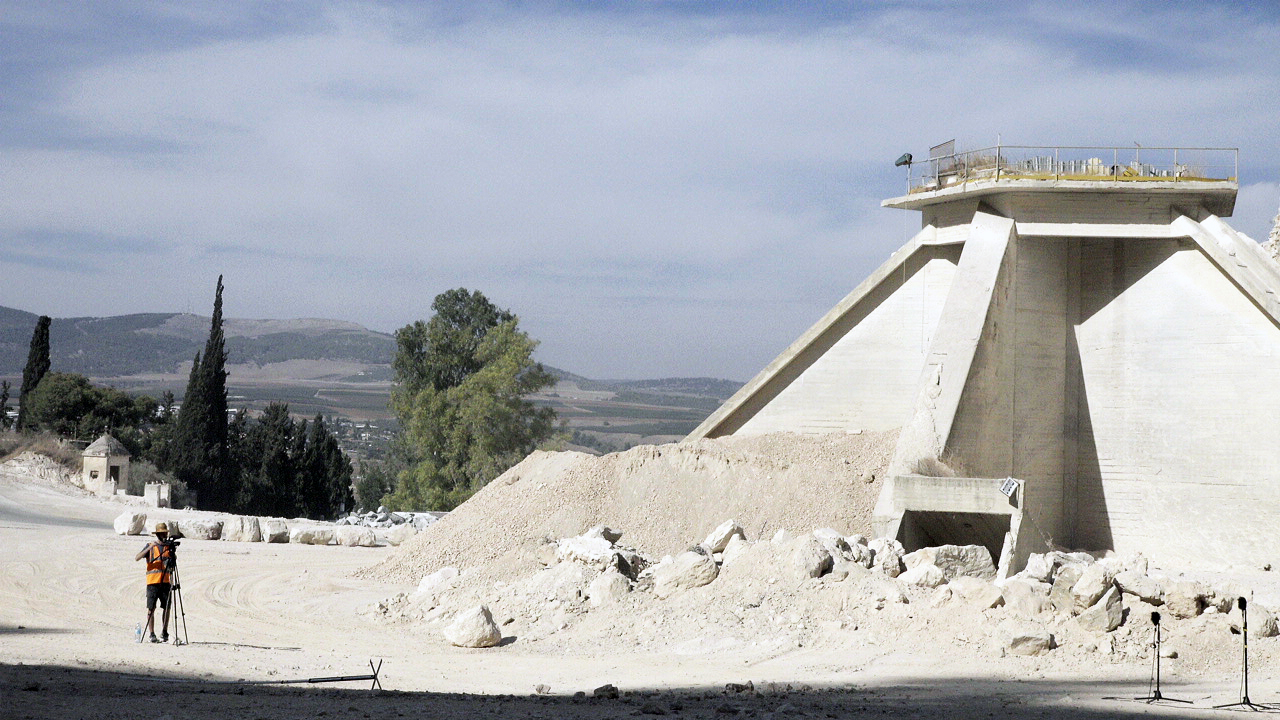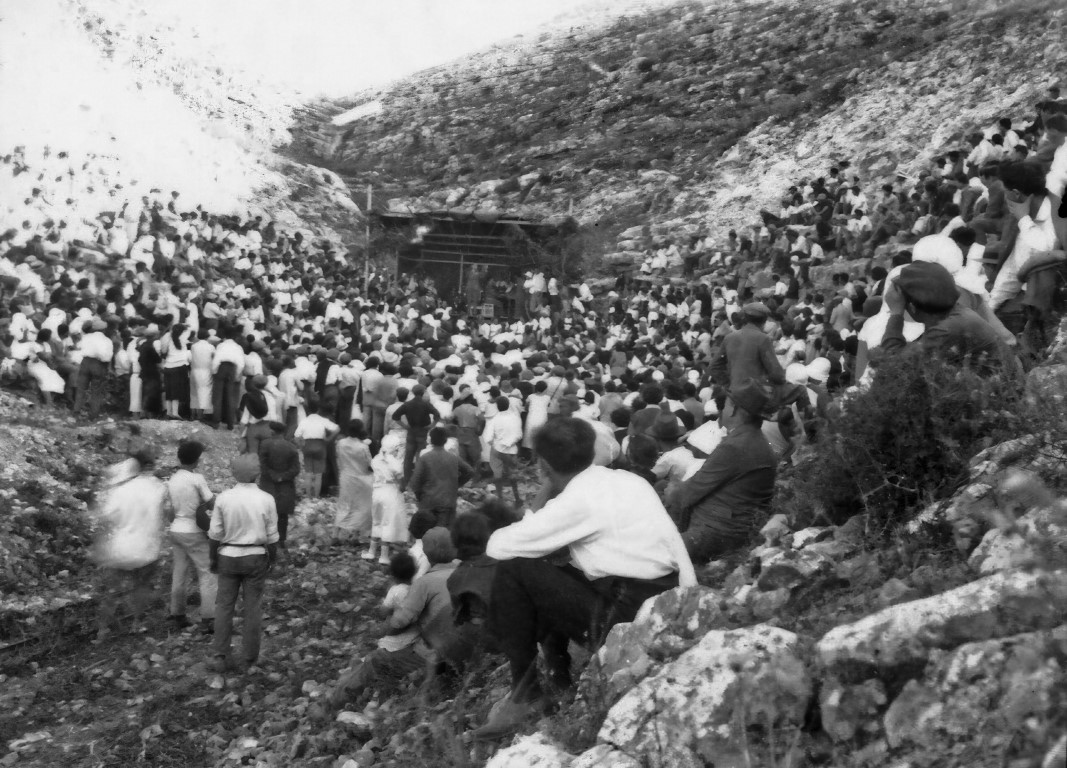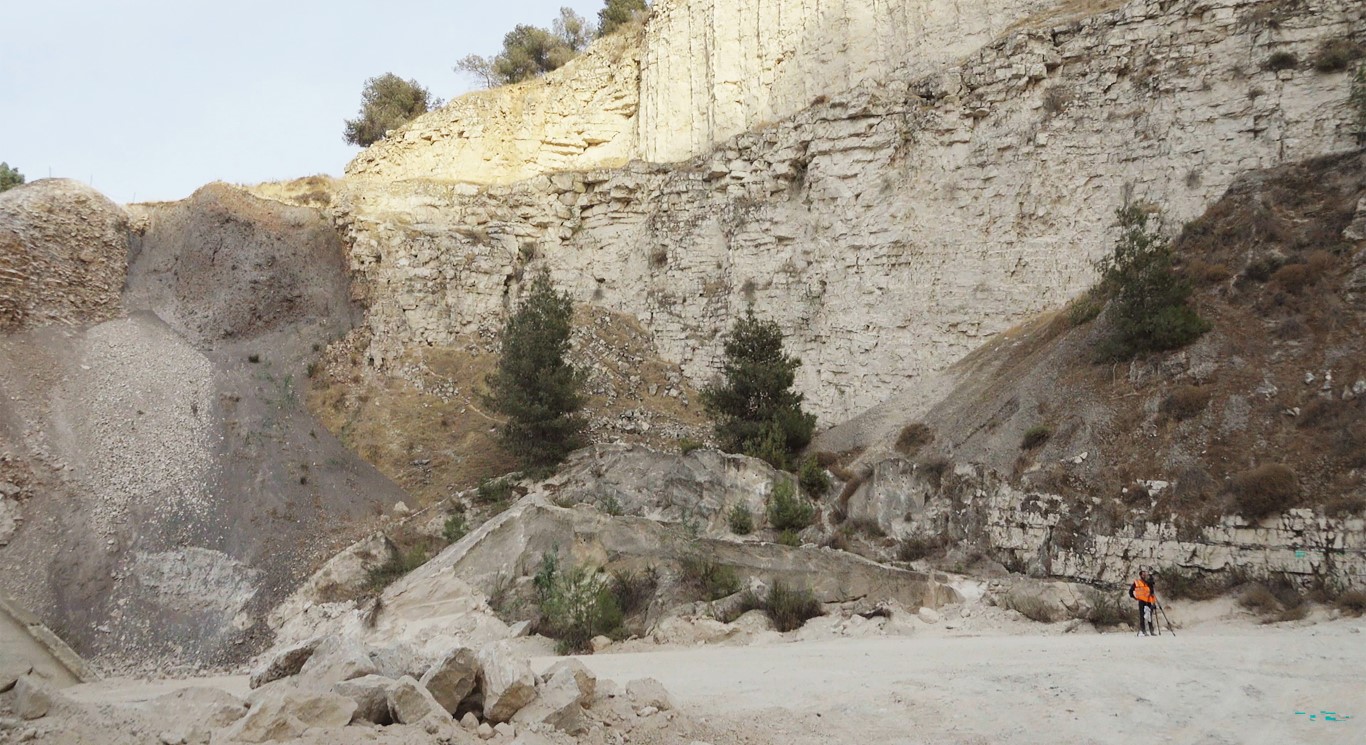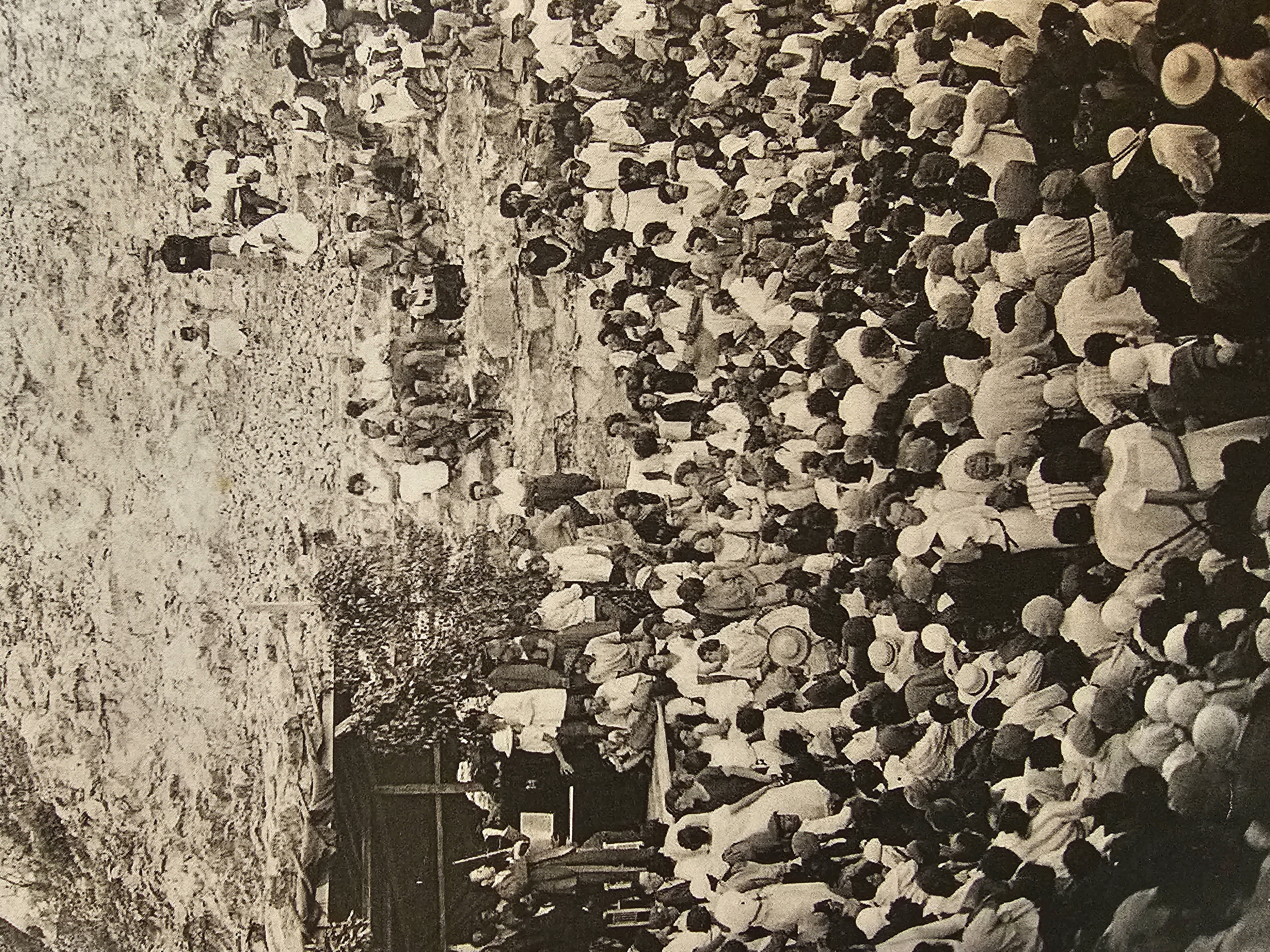Relli De Vries
The Concert in the Quarry and the Plains of Unconformity
Curator: Galia Bar Or
29.3.24
25-year-old Jascha Heifetz was already a world-renowned violinist when he accepted the invitation to play under the open sky at the Ein Harod stone quarry. In the photos that remain of the concert, Heifetz is seen standing on a makeshift stage, a few branches hanging from it as in an attempt to domesticate the stark space. The sense of transience imbues the bareness of the quarry and the gamut of interactions evident in the attentive crowd that gathered in their best clothes to listen to the music. Some standing up, others sitting on rows of limestone or leaning against the edge of the stage, at the feet of the great violinist.
Relli De Vries’s encounter with the photo of the concert struck her as if from the depths of an extensive research that is entirely hers. De Vries is a multidisciplinary artist whose practice incorporates disciplines like geology and geography. At the same time, she is well aware of the lacuna that remains outside the scope of conventional measuring tools. The photo seemed to offer new ways of exploring “place” as a complex whole. It captured the place, the event, and the moment like a lightning rod; gathers an array of spatial interactions and records deep shifts of materials and processes, ones that follow a distinct systemic logic that transcends human time.
De Vries wished to return to the abandoned quarry with the music in a way that will allow attentiveness to sound; one that is aimed not at defining a place, but at unravelling manifold identities and complex belonging, and at creating a multilingual dialogue with absence – that only art can touch. She approached Yael Barolsky and Ilan Volkov on violins and Ram Gabay on drums (Mines Trio) to collaborate on a present-day concert – a tribute to the concert that was etched in the memory and gained a mythological status over the years. The contemporary music produced an untamed sound, pushing the boundaries of the instruments and the body to the liminal space that challenges the limits of language. The music charged the space through performative actions that responded to the wind and to the reverberations of sound, attending to the layers of memory, to the hammering on stones, to void and absence. It seems that from now on, the accumulated time – including the events of the past months – is present in a different way in the photo of the concert and the moving attentiveness to Jascha Heifetz’s music.
The original title – Life Requires Art – given early in the process to De Vries’s work, changed into The Concert in the Quarry and the Plains of Unconformity, which connotes the disconnected. In geology, the term relates to the gaps and disparities in geological processes, as in the volcanic eruption marked by the vertical basalt dike in the horizontal limestone strata of the quarry. In that sense, The Concert in the Quarry and the Plains of Unconformity aspires to summon a different manner of attention and exploration; perhaps even a different existence, which – in probing the notion of a place – gives way to the lacuna and to the uncanny that nestles within us.

From a record in the Quarry site 2018, Photo: Relli De Vries

From a record in the Quarry site 2018, Photo: Relli De Vries

Jascha Heifetz Concert, 1926, Photo: Yosef Shvaig

From a record in the Quarry site 2018, Photo: Relli De Vries

Jascha Heifetz Concert, 1926, Photo: Yosef Shvaig

